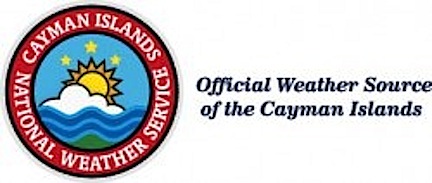Cayman: Atlantic Hurricane Season Prediction
from The Weather Service of the Cayman Islands

As we start to look at the upcoming hurricane season it is critical to take a look back at the past season:
The 2019 hurricane season produced 18 named storms, 6 hurricanes and 3 major hurricanes. The season will be remembered for the significant destruction and loss of life by Hurricane Dorian as it killed at least 84 people and produced $4.6 billion U.S. Dollars of damage mainly in the Bahamas. The names of both storm were retired by the Regional Hurricane Committee when they met in March 2019.
The Cayman Islands National Weather Service has two main sources for seasonal hurricane prediction, the Colorado State University and National Oceanic and Atmospheric Administration (NOAA).
The Colorado State University team led by Mr. Philip Klotzbach and Mr. Michael Bell provides updated prediction throughout the year while NOAA’s representativesprovides a forecast in May each year.
An average hurricane season produces around 12 named storms, 6 hurricanes and 3 major hurricanes.
The Colorado State team April 2020 forecast for the Atlantic Basin Hurricane Season calls for slightly above average season with 16 named storms, 8 hurricanes and 4 major hurricanes. The NOAA prediction will be available in May however there is usually only minor differences between the two forecast’. The prediction is not just for the Cayman Islands but for the entire Atlantic Ocean basin so be careful of your perception of the season.
In terms of the factors that impact the number and strength of storms during the hurricane season, scientist at the Colorado State said, “Current warm neutral ENSO conditions appear likely to transition to cool neutral ENSO or potentially even weak La Niña conditions by this summer/fall. Sea surface temperatures averaged across the tropical Atlantic are somewhat above normal. Our Atlantic Multi-decadal Oscillation index is below its long-term average; however, most of the tropical Atlantic is warmer than normal. We anticipate an above-average probability for major hurricanes making landfall along the continental United States coastline and in the Caribbean.
Climatology of the Hurricane Season:
To remind all the Hurricane Season starts on June 1st through to November 30th.
These dates are based upon long term monthly numbers of tropical storms and hurricanes. Despite these long term numbers it should be noted that a number of systems do in fact form outside the normal hurricane season. For example Tropical Storm Alberto formed in May 2018 and Tropical Storm Arlene formed in April 2017.
During the season, there are usually low numbers of hurricanes in the first half of the season, leading the public to possibly question the accuracy of the forecast. The peak of the Hurricane Season is considered to be around September 11th and is based on long term numbers. The second half of the season tends to produce very powerful hurricanes some of which form in the western Caribbean.
The three problems with these late season storms forming in the western Caribbean include possible short warning times, erratic paths and potential of rapid intensification.
Examples of such storms include: Hurricane Mitch 1998, Hurricane Michelle 2001 and Hurricane Paloma 2009. Residents not aware of the late season climatology of the region may be caught preparing for a weak storm but get caught when a major storm hits. As a result residents should always be prepared for the impact of a major storm especially in the latter part of the season.
Two agencies that work closely together as part of a National Early Warning System are the Cayman Islands National Weather Service and Hazards Management Cayman Islands (HMCI). The main roles of the Cayman Islands National Weather Service during the Hurricane Season is in monitoring the formation and progress of systems; warning the public when these systems become a threat; and provide guidance on the impacts of major storms. Hazards Management Cayman Islandshas overall responsibility for the national Comprehensive Disaster Management programme, including preparedness, response, mitigation and recovery. HMCI is responsible for the National Emergency Operations Centre (NEOC), which is activated to direct and coordinate the response to national threats. HMCI also has responsibility for maintaining the National Hazard Management plans for threats such as hurricanes and earthquakes.
Storm and weather information from the Cayman Islands National Weather Service can be found on our website (www.weather.gov.ky), Facebook page and our weather App. Our information is also relayed through most radio stations as well as the Weather Radio 107.9 FM. Information from Hazards Management Cayman Islands can be found on their website http://www.caymanprepared.gov.ky. As part of National Preparedness program the two organizations provide public awareness on the threat of natural disasters such as hurricanes as well as up to date storm data specific to the Cayman Islands, once that threat exists.
It has already been quite a year for the Cayman Islands in terms of natural disasters with the 7.7 magnitude earthquake that impacted the Cayman Islands on January 28th 2020, the early March dump fire and the ongoing World Pandemic COVID-19. An now with everything going on and what we have been through this year we must now turn our attention to the hurricane season. Please be reminded that regardless of what has happened it does not decrease the possibility of the Cayman Islands being impacted by hurricanes.





